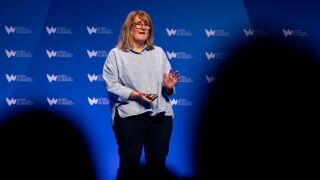The technologies behind mobile payments, and the role they will play in the industry, are clearly at the forefront of the strategising by major telcos at the moment. Given that Juniper Research predicted earlier this month that the global mobile payment market would grow from this year’s $240 billion to $670 billion by 2015, it’s no surprise that everyone wants in.
A number of the major US players – AT&T, Verizon and T-Mobile – have come together to create the Isis mobile payment network. It was once thought that this network would compete with established credit card companies. However, Isis has now announced the support of MasterCard, American Express, Visa and Discover, allowing consumers to take advantage of their existing credit cards, rather than competing with them directly. Trials in the technology are scheduled for next year.
Meanwhile, Sprint has opted out of the alliance, instead announcing that it will use American Express’ Serve mobile-payment application.
There is no doubt that growth in the market is expanding, but the level of expectations may have been optimistic, according to Gartner. It has valued worldwide mobile payment this year at $86.1 billion, showing a growth of over 75% from its 2010 value. If we can determine why this figure varies so significantly from Juniper’s more buoyant valuations, we’ll be sure to update.
Gartner’s forecasts are more worrying in other ways, as it detects “softer market demand” than forecast.
“In developing markets, despite favourable conditions for mobile payment, growth is not as strong as was anticipated. Many service providers are yet to adapt their strategies to local requirements,” says Sandy Shen, research director at Gartner. While she cites Kenya and the Philippines as “success models”, she does not believe these will be easily translated to other markets, where technologies are limited due to the constraints of entry-level mobile phones.
Developed markets face different challenges, in her opinion. Providers are focussing on Near Field Communication (NFC) technologies, but Shen believes mass-market adoption is at least four years away, with WAP remaining the preferred mobile access technology. “The biggest hurdle is the need to change user behaviour by convincing consumers to pay with mobile phones instead of cash and cards,” she said.
Gartner’s research shows that there will be over 141.1 million mobile payment users worldwide in 2011. The market clearly exists, if providers can convince users that they can identify and support the appropriate technologies.




